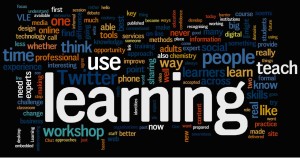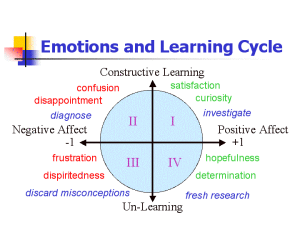 School is back in session. From now until spring break the greatest amount of learning for the year occurs. However, how much students learn depends on several factors. The least important is their individual intelligence. The teacher counts for most – but it depends on what is recognized as good teaching as well as how the student is feeling about the learning process and their own abilities.
School is back in session. From now until spring break the greatest amount of learning for the year occurs. However, how much students learn depends on several factors. The least important is their individual intelligence. The teacher counts for most – but it depends on what is recognized as good teaching as well as how the student is feeling about the learning process and their own abilities.
Setting high standards and basing lessons on Essential Questions are a big part of what constitutes good teaching, but there is a far more significant element. To truly connect students with learning, you must deal with the role played by emotions. Earlier this week I had a TTK (Things to Know) blog post citing Annie Murphy Paul’s Brilliant Report on Emotions and Learning. What wasn’t discussed in it was how uniquely positioned school librarians are in addressing the key emotions of curiosity, delight, flow, engagement, confusion, frustration and boredom.
The first three are inherent in inquiry based learning which uses student’s interests as a jumping off point for exploring a topic. Confusion is a natural part of research. Unlike so much of what goes on in the classroom, research is not linear. It takes unexpected twists and turns and hits into dead ends. By letting students know it is an expected step in the process, you can convert confusion into curiosity. And boredom? Boredom comes from being channeled into what is too difficult, too easy, or far outside a kid’s interest. The library is the one place students should never be bored.
 An oft-repeated phase about the school library is that it should be a welcoming student-centered environment. It is that when we design learning experiences with our students in mind. When students always are treated with respect and not judged, we encourage them to be their best and discover just what that means for them.
An oft-repeated phase about the school library is that it should be a welcoming student-centered environment. It is that when we design learning experiences with our students in mind. When students always are treated with respect and not judged, we encourage them to be their best and discover just what that means for them.
Expectation is an emotion. What students expect when they walk into a classroom – or the library – affects everything that happens after. If they are anticipating a subject where they will do poorly, they have already set the bar low and won’t rise above it without some hard work by the teacher to change that mind set. When they expect to be bullied or humiliated, they shut down or become hostile. Neither reaction makes them open to learning.
Which comes down to the most important emotion for learning and life. Those who are in high self-esteem are not disheartened by challenging material. They embrace it as a step in a self-discovery process. In general those in high self-esteem are kind and generous with others, improving the environment around them.
Look for ways to build your students’ self-esteem. You don’t do it with empty compliments. It’s not “you did a great job.” It’s specific. “You found some great resources, I didn’t know about it. I am so glad you shared it with us.” You don’t praise only achievement. You commend the process. Saying “I am impressed by how persistent you are, even when you don’t get it at first,” is what helps them build self-esteem. Working one-on-one with students, you, more than a classroom, teacher create the best environment for lifelong learning.

